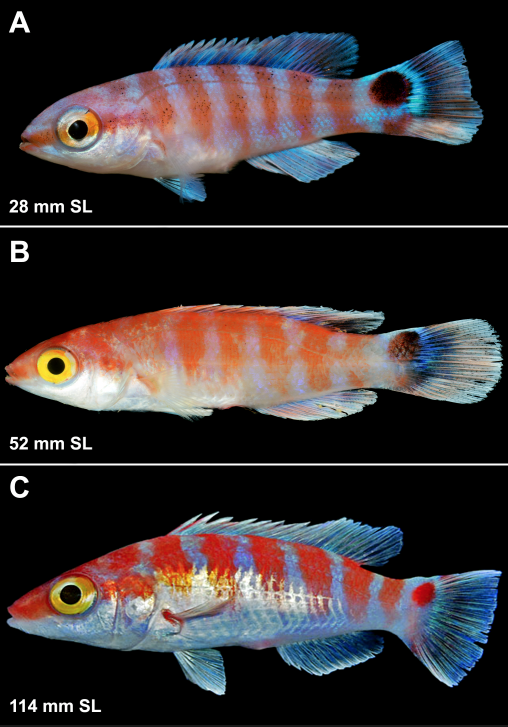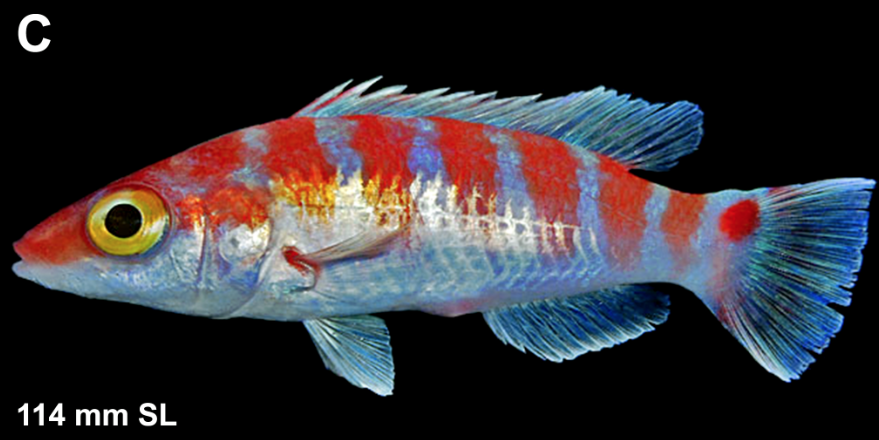A new species of small, deep-water wrasse has been described from the Atlantic Ocean. Members of the Polylepion genus have previously been restricted to the Indian and Pacific Oceans but this one, named Polylepion gilmorei after Grant Gilmore, formerly of the Harbor Branch Oceanographic Institute, was found in the Caribbean. The first specimens were actually collected in the 1980s and 90s in the Bahamas and Cuba, then much later in 2013-18 from Curaçao, Dominica, and Roatan.
Wrasses are usually fish of shallow tropical and temperate waters, but a few inhabit depths of 100-400 meters, and Polylepion is among them. The Smithsonian found their fish via manned submarine at 219–272 m, but it turned out the same species had been collected decades before, this time at 367m, via submersible in the Bahamas. Further specimens were collected from over 300m by the Smithsonian Deep Reef Observation Project in 2016-2018, along with ROV footage of the same fish off the Florida Keys and Puerto Rico in 2011 and 2013. The paper describes the new species, which inhabits the rariphotic reef-fish faunal zone at depths of 219–457 m, as well as its evolutionary relationship to its congeners in other oceans. Adults grow to 114mm.

The Rariphotic Zone
The Rariphotic (low light) zone is a newly discovered faunal zone from 130–300 meters (400–1,000 feet) deep. It’s below the reef-building coral zone, and it’s as deep as Curasub can go. Regular readers may have noticed that many new species are coming from the depths, way below where a recreational diver can go to. The Rariphotic zone will no doubt produce many more new species as it is further explored, but due to the need for rebreathers, manned subs, and ROVs, it’s unlikely that the fish species discovered will make their way into the hobby.
Go to https://doi.org/10.1643/i2022075 to read up more on the paper, the genus, and its authors.



